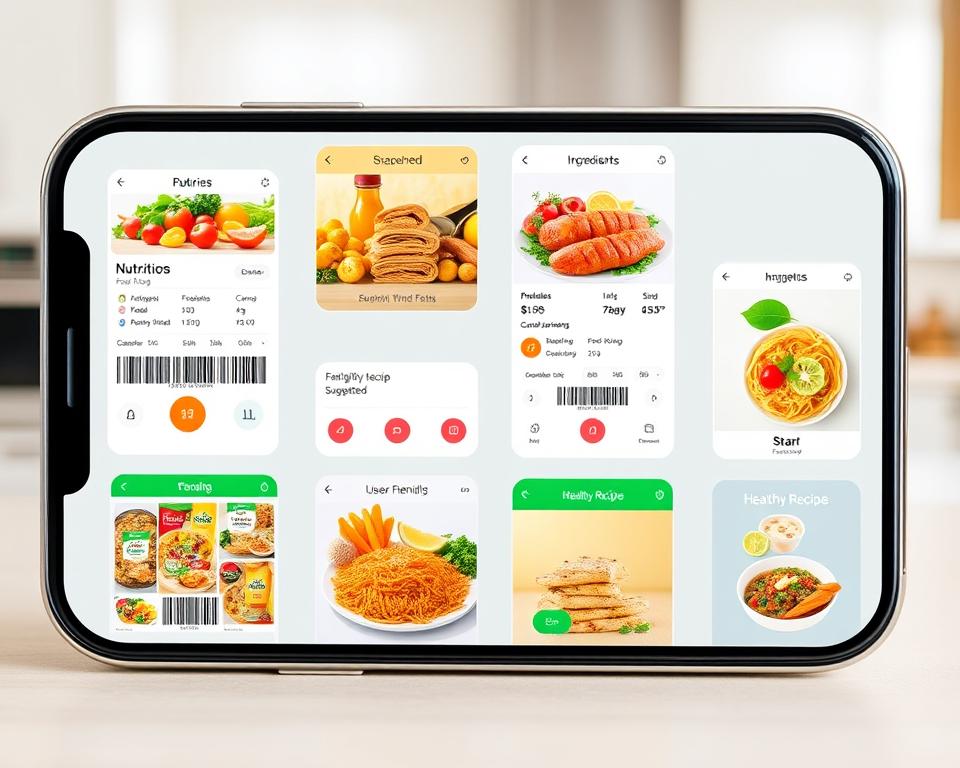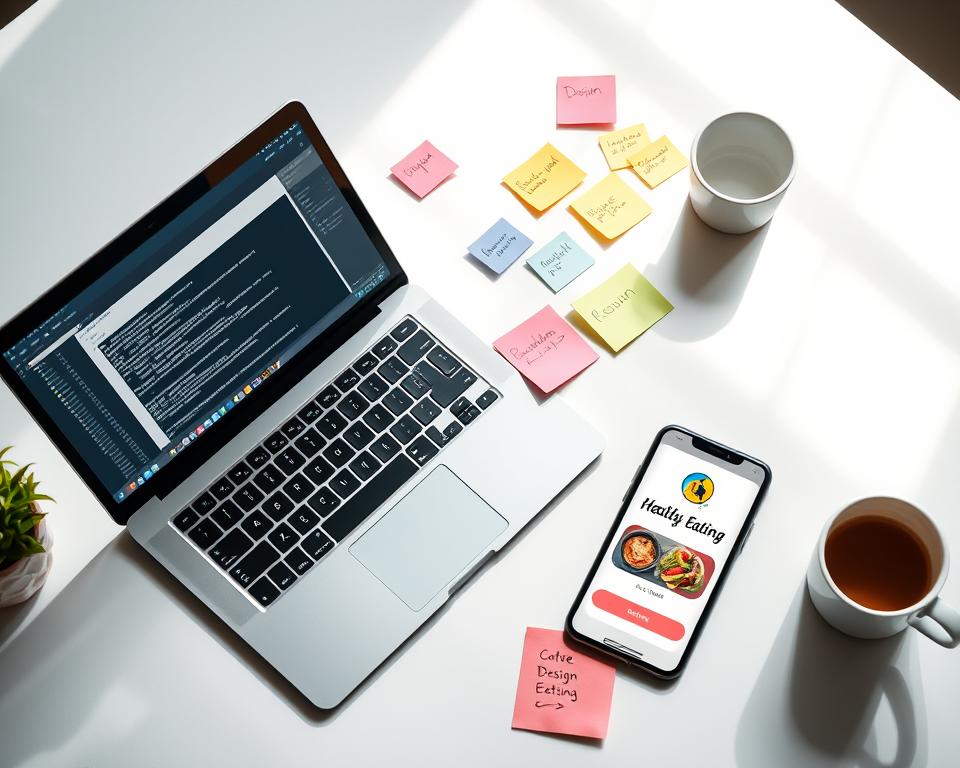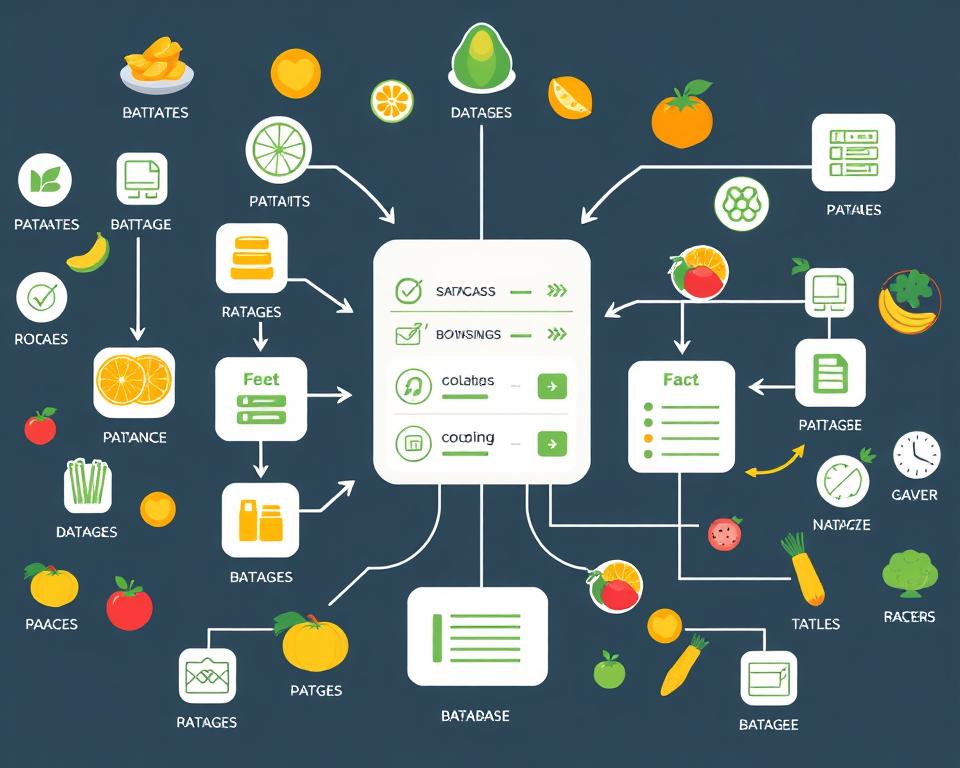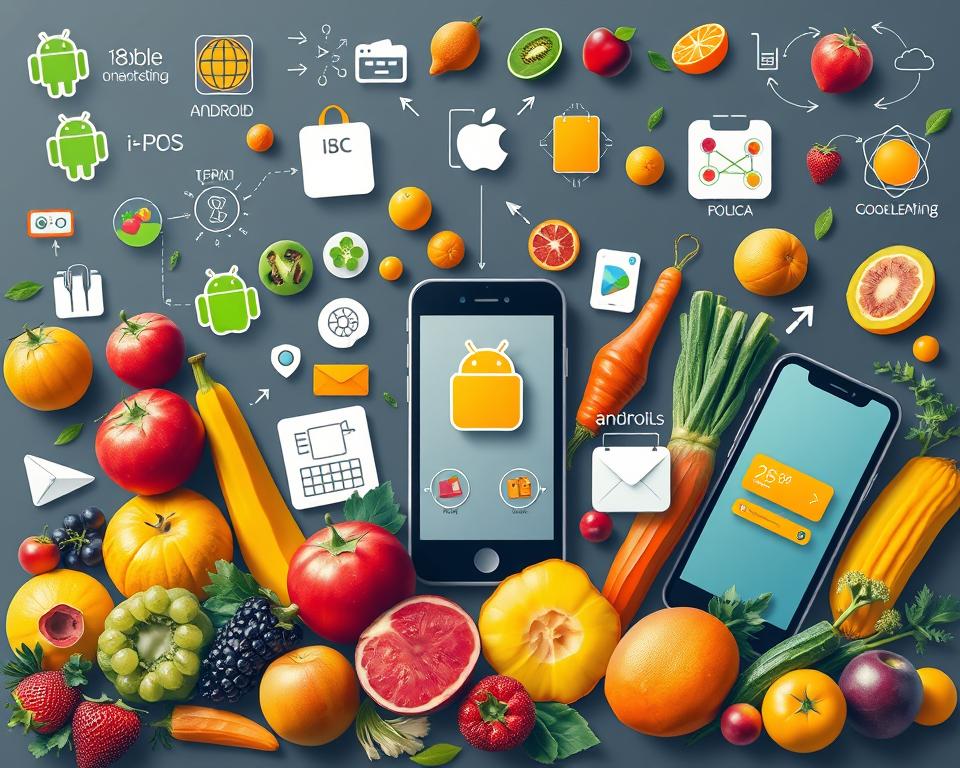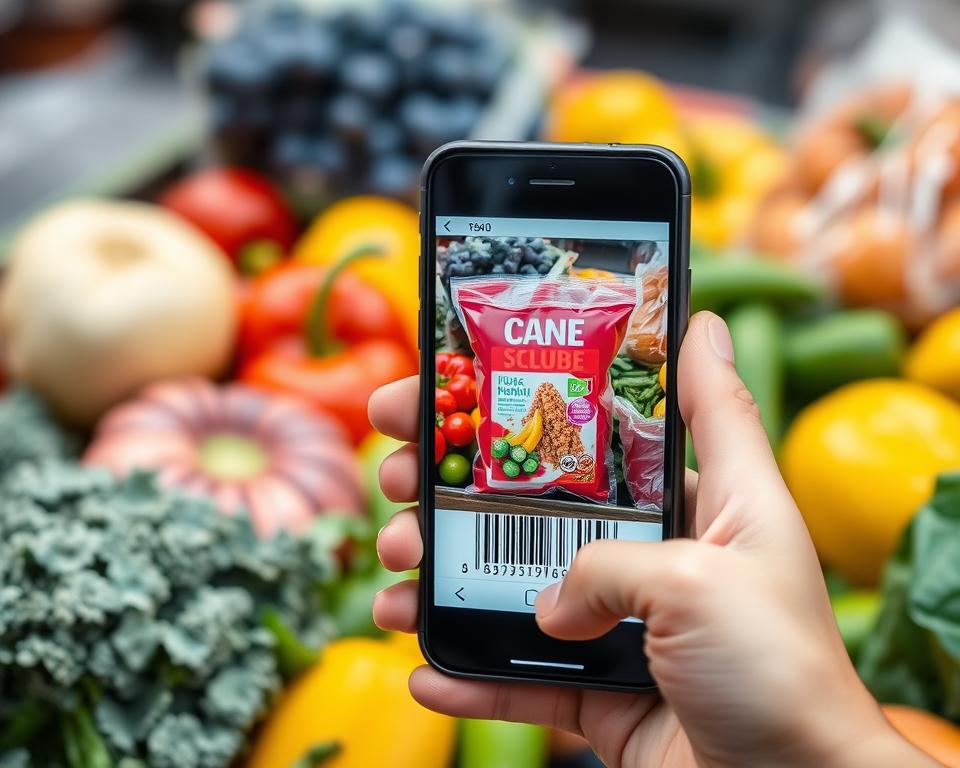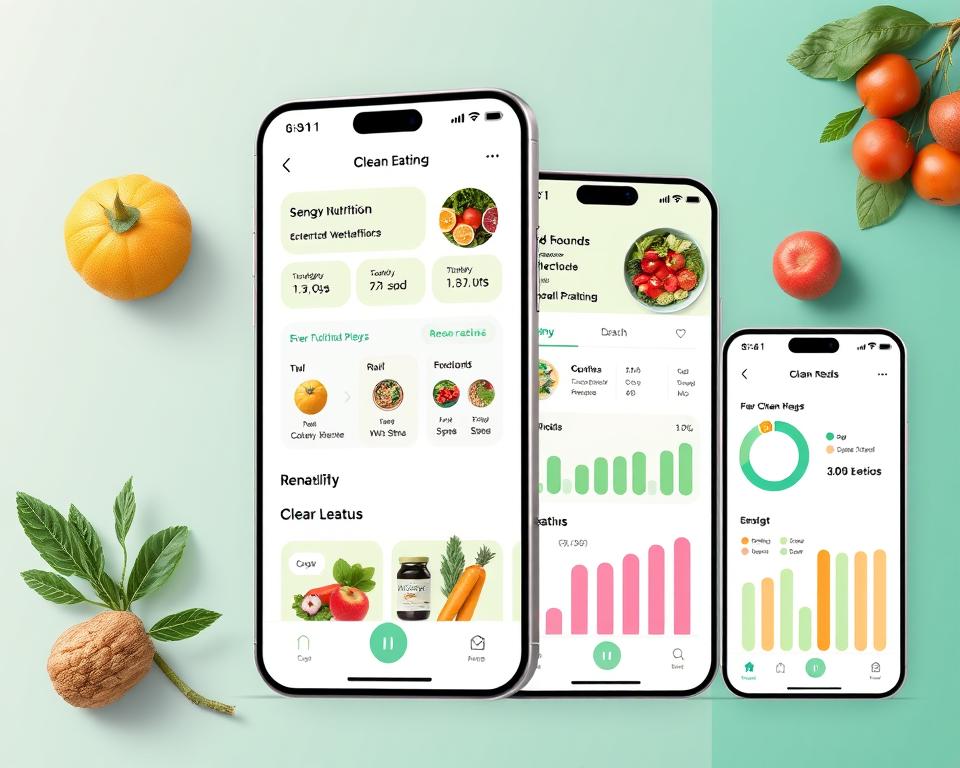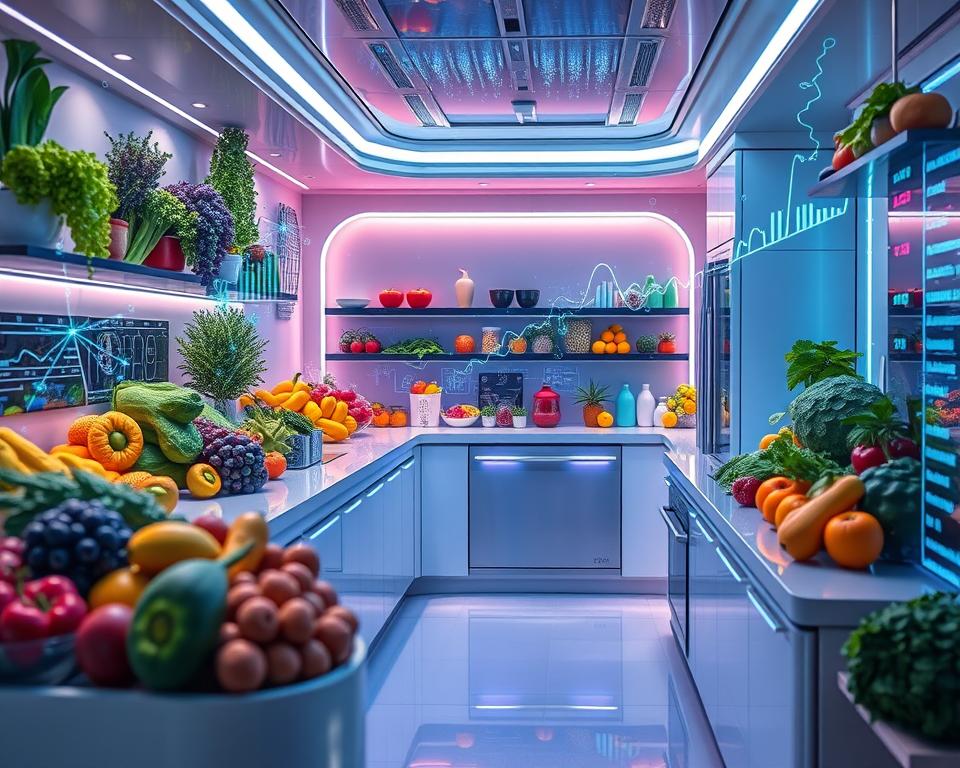In today’s world, more people want to make healthy food choices. Yuka, a top food scanner app, has shown the way. Now, developers are working on apps like Yuka for clean eating and healthy living.
This article will cover how to make Yuka-like apps. We’ll talk about the market need, the technical side, and the strategies for success. It’s for anyone wanting to create a Yuka alternative, whether you’re new to app development or an established brand.
Table of Contents
Key Takeaways
- Understand the growing demand for clean eating and healthy living mobile apps in the consumer market
- Identify the key features and functionalities that define a successful Yuka-like food scanner application
- Explore the technical requirements and development framework for building a robust Yuka alternative
- Discover strategies for building a comprehensive product database and implementing advanced nutritional analysis algorithms
- Learn about effective monetization models and user engagement tactics for health-focused mobile apps
Understanding the Market Need for Clean Eating Apps
The need for food transparency and nutritional awareness is growing fast. This has led to a big increase in the use of clean eating apps. As consumer health trends change, more people want health apps. This demand is driving the creation of new apps that help people eat healthier.
In today’s world, people want tools to help them choose better food. Apps like Yuka are popular because they give detailed info on food. They show users what’s in their food and how healthy it is. This helps people make better food choices and live a cleaner lifestyle.
The rise of clean eating apps shows how important nutrition and ingredient transparency are. People want to know exactly what they’re eating. Clean eating apps give them this info. They are key for those who want to stay healthy and live sustainably.
“The future of food is transparent, and consumers are leading the charge for greater nutritional awareness and accountability from food manufacturers.”
As more people want clean eating apps, developers see a big opportunity. They use technology to create apps that meet the needs of health-focused consumers. This helps shape the industry and supports consumer health trends.
Essential Features of Successful Food Scanner Applications
Creating a top-notch food scanner app needs careful thought about key features. These features are crucial for health-focused users. At the core are three main parts: barcode scanning, a vast product database, and detailed nutritional analysis.
Barcode Scanning Technology Integration
Being able to scan barcodes fast and right is key for any food scanner app. Barcode scanning lets users quickly find out about products. This makes shopping easier and helps users make better choices.
Product Database Management
A good product database is vital for giving users the latest info on scanned foods. It should have lots of products, including nutritional facts and ingredient lists. Keeping this database up-to-date ensures users can rely on the info they get.
Nutritional Analysis Components
Great food scanner apps do more than just scan barcodes. They offer detailed nutritional info, like calorie counts and macronutrients. This helps users make smart food choices.
By combining these key features, food scanner apps become valuable tools for healthy eating. As more people want these apps, developers must focus on these core features to keep their apps popular.
How to develop Yuka like Apps: Technical Requirements
Making a Yuka-like app needs a solid technical base. You need the right app development tools, good hardware specifications, and a smooth development environment. Each part is key to making a useful and easy-to-use app.
First, let’s look at the main software requirements for a Yuka-like app:
- Integrated development environment (IDE) such as Android Studio or Xcode for mobile app development
- Database management systems (DBMS) like SQLite or MongoDB for efficient data storage and retrieval
- Image processing libraries and APIs for barcode scanning and product recognition
- Nutrition analysis algorithms and APIs to provide comprehensive nutritional information
- Cloud services for scalable backend infrastructure and data hosting
For hardware specifications, the app should work well on many mobile devices. Important things include:
- High-resolution camera for accurate barcode scanning and product identification
- Sufficient processing power (CPU) and memory (RAM) to handle real-time data processing and analysis
- Adequate storage capacity to accommodate the product database and user data
- Connectivity options (Wi-Fi, Bluetooth, cellular) for seamless integration with cloud services and APIs
Finally, the development environment should make app creation easier. This might mean:
| Component | Recommendation |
|---|---|
| Operating System | macOS or Windows, depending on the target mobile platform |
| Version Control | Git-based repositories like GitHub or GitLab |
| Continuous Integration | Tools like Jenkins or Travis CI for automated build and testing |
| Debugging and Testing | Emulators, simulators, and real-device testing for comprehensive quality assurance |
By thinking about these technical requirements, developers can make a Yuka-like app. It will meet the needs of health-conscious users and offer a smooth experience.
Building a Robust Product Database Architecture
Creating a detailed and accurate product database is key for a successful food scanner app like Yuka. This part covers how to collect data, design a database, and integrate APIs. These steps help your app give users the latest and most reliable health info.
Data Collection Methods
Getting all the data collection for your food database is vital. You can do this by:
- Working with trusted food makers and sellers to get product details
- Using crowdsourcing to get info from users
- Connecting with government and industry databases for food product information
- Using AI and computer vision to read product images and labels
Database Structure Design
Creating a good database architecture is key for managing lots of food product information. Important things to think about include:
- Using a relational database to link product categories, nutrition, and user likes
- Choosing a data storage that can grow with your app
- Optimizing database for fast info retrieval
- Keeping data correct and consistent with strong checks and error handling
API Integration Strategies
Smooth API integration is vital for keeping your product database current and correct. Consider these strategies:
- Finding reliable API providers for food and nutrition data
- Using secure and fast API integration to get data in real-time or scheduled
- Creating flexible data mappings for different API formats
- Using caching to reduce API calls and make your app faster
By focusing on these key areas, you can make a food scanner app that gives users accurate and timely health info. This helps them live healthier and eat cleaner.
Mobile Platform Selection and Development Framework
Creating a Yuka-like app needs a smart plan for choosing mobile platforms and development frameworks. Developers must think about the pros and cons of iOS development and Android development. They should also look into cross-platform frameworks to reach more mobile app platforms.
Choosing between iOS and Android is key for a Yuka-like app. iOS offers a smooth user experience and access to Apple’s big ecosystem. Android, on the other hand, reaches a wide and varied user base. Cross-platform frameworks like React Native and Flutter let developers make one codebase for many mobile app platforms.
| Criteria | iOS Development | Android Development | Cross-Platform Frameworks |
|---|---|---|---|
| User Base | Smaller but wealthier | Larger and more diverse | Reaches both iOS and Android users |
| Development Complexity | Simple and streamlined | Complex and fragmented | Write-once, run-anywhere aim |
| Monetization Potential | High app and in-app purchase willingness | Diverse monetization options, including ads | Flexibility in monetization strategies |
The choice of mobile platform and development framework depends on the app’s goals and target audience. By carefully considering these factors, developers can make a well-informed decision. This decision will help the app succeed in the competitive mobile app platforms world.
Implementing Barcode Scanning Technology
To make a food scanning app work well, you need to add barcode scanning technology. This feature lets users scan barcodes to find out about products fast. It helps with checking nutrition and ingredients.
Camera Integration
The app uses the camera for scanning barcodes. It’s important to make sure the camera works well. This way, users can scan barcodes easily, even in bad light or from far away.
Image Processing Algorithms
After scanning, special algorithms work on the image. They find the barcode and get the needed info. These algorithms help the app read barcodes well, even if they’re messy or hard to see.
Barcode Recognition Systems
The barcode scanning system is the app’s core. It uses smart tech to read barcodes and find product details. This makes scanning fast and easy for users.
By combining camera tech, image processing, and barcode systems, the app offers a top-notch scanning experience. It helps users make smart choices about what they eat.
| Feature | Description |
|---|---|
| Barcode Scanning | Accurately identify products by capturing and decoding their barcodes |
| Camera Integration | Leverage the device’s camera for efficient and reliable barcode capture |
| Image Processing | Apply advanced algorithms to analyze and process the barcode image |
| Barcode Recognition | Utilize pattern-matching technology to recognize and decode barcode information |
“Accurate barcode scanning is the foundation for a successful food scanning app, enabling users to quickly and reliably identify the products they’re interested in.”
User Interface Design for Health-Conscious Consumers
Creating a visually appealing and user-friendly interface is key for health-conscious consumers. They look for apps that are easy to use and offer a smooth experience. When designing your health app, focus on what your target audience needs and likes.
Make sure the app is simple and clear. The layout should be clean and organized. Users should be able to easily find features like barcode scanning and nutritional analysis.
Choosing the right colors is also important. Use a soothing color palette like earthy tones and soft greens. Avoid bright or harsh colors that might be overwhelming.
Also, think about user-friendly design principles to improve the app’s feel. Use large buttons, clear labels, and easy-to-follow menus. Make sure the app works well on both mobile and tablet devices.
By focusing on UI/UX design for health-conscious users, you can make an app that looks good and works well. This will keep users coming back and loyal to your app.
| Design Principle | Rationale |
|---|---|
| Simplicity and Clarity | Uncluttered layout and organized information presentation to enhance usability |
| Soothing Color Palette | Earthy tones and calming colors to create a welcoming and health-focused atmosphere |
| User-Friendly Design | Large buttons, clear labeling, and intuitive navigation to improve the overall user experience |
Backend Development and Server Architecture
Building a strong backend is key for a Yuka-like app. It needs to give users accurate and up-to-date info on products they scan. This part talks about the important parts of backend work and server setup. We’ll look at cloud infrastructure setup, database management systems, and API development.
Cloud Infrastructure Setup
A good cloud setup is vital for handling lots of data and users. Using services like Amazon Web Services (AWS) or Google Cloud Platform (GCP) makes setting up easy. It ensures the app works well, even when more people use it.
Database Management Systems
The core of a Yuka-like app is its database. It keeps all the product info, nutritional data, and user choices. Strong databases like PostgreSQL or MongoDB help manage this data well. They make sure data is stored and shared smoothly.
API Development
A good API is essential for the app to work well with other systems and data. A RESTful API lets the app share data safely. It can get product info and use tools from other backend architecture services.
By focusing on these backend and server aspects, the Yuka-like app can grow. It will be secure and efficient, helping users eat clean and live healthy.
Integration of Nutritional Analysis Algorithms
The demand for health apps is rising fast. This makes nutritional algorithms key for making food scanning apps successful. These algorithms help create food scoring systems and health recommendations. They give users valuable dietary analysis to help them eat clean and live healthy.
At the heart of these features is the ability to check food’s nutritional value. The app uses advanced data and big databases to do this. It looks at calories, macronutrients, and good or bad ingredients in foods.
This detailed look at food helps the app give users health recommendations and dietary analysis. It helps them choose foods that fit their diet and taste. With these nutritional algorithms, the app becomes a key tool for those who care about their health. It helps them find healthy food options and make choices that are good for them.
| Feature | Description |
|---|---|
| Nutritional Scoring | Analyze the nutritional content of scanned foods and provide a comprehensive rating system to help users make informed decisions. |
| Personalized Recommendations | Leverage user data and preferences to suggest healthier alternatives and provide tailored dietary guidance. |
| Allergen Identification | Detect the presence of common allergens and food sensitivities, empowering users to avoid potential health risks. |
| Nutrient Tracking | Enable users to monitor their daily intake of key nutrients, supporting their overall health and wellness goals. |
By adding these nutritional algorithms, food scanning apps become powerful health tools. They help users control their health and make smart food choices. This makes the app more useful and a trusted friend on the path to a healthier life.
Security Measures and Data Protection
In today’s digital world, keeping user data safe is a top priority for health app makers. Users share personal and health info with these apps. It’s vital to have strong security to protect their privacy.
User Data Encryption
Strong encryption is key to keeping user data safe from hackers. Using top encryption like AES or RSA keeps user info, like health records, secure. This makes sure only authorized people can access it.
Compliance Requirements
Health apps must follow strict data protection laws, like the GDPR in Europe. These rules help keep users’ trust by ensuring apps handle data correctly. Following these rules shows a commitment to protecting privacy.
Privacy Policy Implementation
A clear and easy-to-understand privacy policy is essential. It should explain how data is used and protected. Keeping the policy up to date shows you care about user privacy.
| Feature | Benefit |
|---|---|
| Data Encryption | Safeguards sensitive user information from unauthorized access |
| GDPR Compliance | Ensures legal compliance and builds user trust |
| Comprehensive Privacy Policy | Promotes transparency and demonstrates a commitment to user privacy |
By focusing on data security, following rules, and having a clear privacy policy, health app makers can build trust. This is crucial for the success of their apps and the safety of user privacy.
Testing and Quality Assurance Protocols
Creating a reliable Yuka-like app needs careful testing and quality assurance (QA) steps. These steps are key to find and fix bugs, make the app run smoothly, and give users a great experience. Let’s explore the main parts of app testing and QA for Yuka-like apps.
Comprehensive App Testing
Good app testing is the base of a strong QA plan. It covers many areas, including:
- Functional Testing: Checking if the app’s main features, like scanning barcodes and analyzing nutrition, work right.
- Usability Testing: Looking at how easy the app is to use, its design, and how users feel about it.
- Performance Testing: Seeing how fast the app loads and handles lots of data, to make sure it’s quick.
- Security Testing: Making sure the app keeps user data safe and follows important rules.
Streamlining the Bug Fixing Process
Along with detailed testing, fixing bugs well is also key. This means:
- Having a good system to report and handle bugs quickly.
- Using a clear method to find, understand, and fix bugs.
- Doing tests again to make sure fixes don’t cause new problems.
Optimizing App Performance
To make sure users have a smooth experience, keeping the app fast is important. This can be done by:
- Code Optimization: Making the app’s code better to use less resources and run faster.
- Data Caching: Storing data that’s often needed, so it doesn’t have to be fetched every time.
- Leveraging Asynchronous Processing: Doing hard tasks in the background, so the app stays quick for users.
By using a detailed testing and QA plan, Yuka-like app makers can make a reliable, fast, and easy-to-use app. This app will meet the needs of people who care about their health.
| Testing Methodology | Key Objectives | Benefits |
|---|---|---|
| Functional Testing | Validate core app features | Ensure app functionality meets requirements |
| Usability Testing | Evaluate user experience | Identify and address UI/UX pain points |
| Performance Testing | Assess responsiveness and scalability | Optimize app performance for seamless user experience |
| Security Testing | Verify data protection and compliance | Safeguard user data and maintain regulatory compliance |
“Comprehensive testing and quality assurance are the pillars of a successful Yuka-like app. It’s not just about identifying and fixing bugs; it’s about delivering a user experience that exceeds expectations.”
Monetization Strategies for Health Apps
Developers of health and wellness apps face the challenge of making money. Luckily, there are many ways to earn revenue while offering great value to users. Strategies include subscription models, premium features, and ads. Understanding the audience is key to success.
Subscription Models
Subscription models are a top choice for health apps. They offer different tiers with exclusive content and tools. This approach brings in steady income and keeps users coming back.
For more on this, check out the guide on building a subscription-based mobile application. It stresses the importance of planning and focusing on user value.
Premium Features
Health apps can also use a freemium model. This offers basic features for free and premium ones for a fee. It lets users try the app before deciding to pay.
By creating premium features that improve the app, developers can encourage users to pay. This balances making money with keeping the app accessible.
Advertisement Integration
Targeted ads are another way for health apps to make money. They work well with subscription or freemium models. By partnering with brands, apps can show ads that fit their theme.
This not only helps pay for app development but also offers users useful information. It’s a win-win for both the app and the user.









